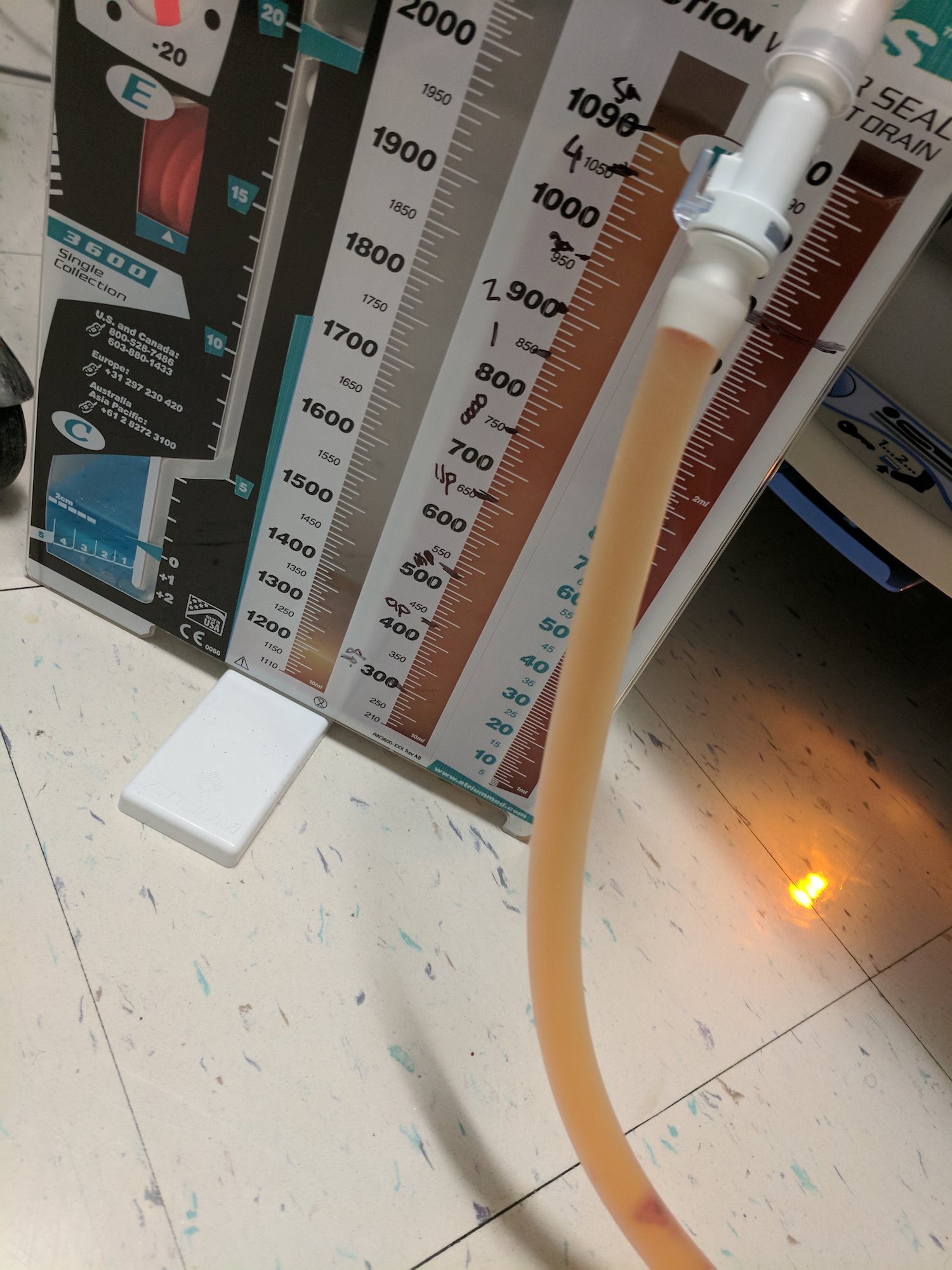The thoracic duct is the primary conduit which carries chyle (lymphatic fluid containing triglycerides, immune cells, proteins, etc.) from the cisterna chyli to the subclavian-jugular vein junction where it empties into the circulatory system. If this duct is disrupted through traumatic (ie, cardiothoracic surgery) or nontraumatic (ie, malignancies like lymphoma) means, chyle can leak into the pleural space resulting in chylothorax.
Like any effusion in the pleural space, patients can experience varying degrees of dyspnea and chest pain. As an intensivist, I’ve seen chest tube drainage turn to a milky fluid (especially after the initiation of nutrition since fat is transported via lymphatics). Standard fluid studies can be helpful if the pleural fluid is bloody in appearance (expect a triglyceride level > 110 mg/dL on a regular diet and usually an exudate by Light’s criteria), but often times in the right clinical context, the diagnosis is simple. Remember that patients can lose electrolytes (ie, sodium and calcium) via chylous drainage as well as fat soluble vitamins.
CT imaging is often times supplemented with specialized studies (lymphangiography and scintigraphy) to localize the etiology of the chyle leak. In the interim, chest tube drainage can improve respiratory mechanics and symptoms.
Have you seen chylothorax before? Drop me a comment with questions!







Hi Rishi! I will just comment that many times we expect postoperative chylothorax also in infants with congenital heart disease as a result of right heart failure.
Thanks so much for sharing, Eva!!